Basement Mold – Basement Mold Removal & Remediation
Mold at Your Home or Business? We Can Help!
Basement Mold Removal and Remediation

No matter what basement mold damage situation you’re dealing with, we have solutions.
Mold growth commonly appears in basements because of the level of moisture, and it can cause damage to the walls, insulation, ceiling, and foundation. If your basement is affected by mold, you need to immediately take the following steps:
- Step 1: Look for signs and symptoms of basement mold including visible mold growth, musty odors, and signs of water damage.
- Step 2: Contain the mold by closing off vents to the basement and using plastic sheeting and tape to seal off the area.
- Step 3: Find and fix the moisture source that caused the mold. Basement mold may be caused by leaks, flooding, or humidity.
- Step 4: Call a mold remediation specialist who can find and remove all mold growth from your basement.
Call RestorationMaster for Basement Mold Removal
Mold in the basement can result in major damage and affect other areas of your home if you do not address it right away. Call RestorationMaster at (888) 915-7197 to find a mold remediation specialist near you.
Mold in the Basement – Who to Call?
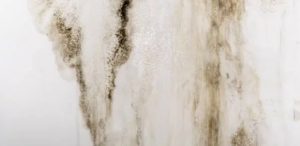
If you find mold in your basement, it is important to call a mold remediation professional right away to contain and remove the mold growth.
Basement Mold Removal – What to Expect?
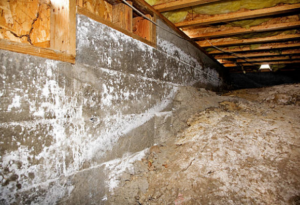
Mold remediation technicians will block off the basement from the rest of your home to prevent the mold from spreading. They will then evaluate the extent of the mold growth and ensure that all mold is removed.
Choosing the Right Mold Removal Service for Basement – Why RestorationMaster?
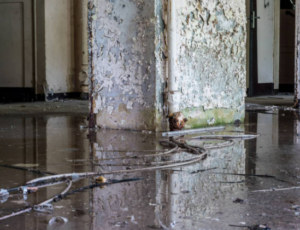
At RestorationMaster, we have worked with the top mold remediation experts of the industry for 11 years and can put you in touch with a trusted professional in your area.
Residential Basement Mold Removal
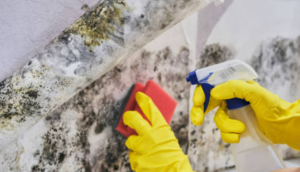
Mold growth in your basement can cause problems for your home as it can lead to foundation damage and structural damage and put your health at risk. Mold remediation specialists will ensure that all mold is removed from your basement.
Commercial Basement Mold Removal
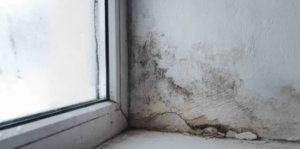
Mold in the basement of a commercial building can lead to serious damage and pose a major health risk. Mold remediation specialists can provide basement mold removal for commercial buildings.
Emergency Basement Mold Removal Service – Call (888) 915-7197 Now
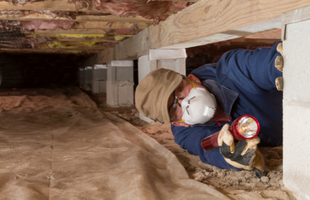
Mold in the basement is an emergency because it can cause major structural damage and spread to other areas of your home. Make sure you call RestorationMaster right away at (888) 915-7197 for a mold remediation service provider in your area.
Contact a local mold remediation contractor in your area:
Basement Mold FAQs
Basement mold generally forms in areas of the basement affected by dampness from excess humidity and condensation or water damage from leaks and flooding. Basement mold can affect foundation walls as well as other structural elements like drywall, wood, ceiling tiles, and insulation. Extensive mold growth in the basement can lead to serious structural damage and greatly increase the risk of health effects from exposure. It is important to address basement mold immediately to prevent further damage.
Mold in the basement may be hard to spot as it can appear in hidden or dark areas. The following are the main signs of mold growth in your basement:
• Musty odors
• Humidity
• Black spots or stains
• Peeling paint or wallpaper
• Condensation on pipes and windows
If you notice any signs of mold growth in your basement, you should call a mold removal professional to inspect your home for mold growth. You can call us at (888) 915-7197 to find a mold remediation specialist in your area.
• Excess moisture from humidity
• Condensation
• Roof and foundation leaks
• Poor ventilation
• Flooding
No matter what caused the mold growth in your basement, you need to act fast to have it removed. A mold remediation professional will help identify the moisture source that caused the mold and remove the mold from your basement.
Call RMF at (888) 915-7197 to find a mold removal professional in your area.
Basement mold removal services involve the complete removal of mold growth from the basement as well as steps to prevent the mold from returning. Mold remediation specialists will start by isolating the affected areas of the basement and fixing the source of the moisture that caused the mold. They will then remove the mold growth, as well as permanently damaged materials, and clean and restore the affected areas to return safe conditions.
You can expect the following from basement mold removal services:
• Mold remediation
• Mold removal
• Mold inspection
• Mold treatment
• Mold cleanup
• Mold abatement
It is important to call a professional for basement mold removal services as soon as you find mold growth in your basement. Call us at (888) 915-7197 for a referral to a mold remediation professional in your area.
When dealing with mold in your basement, it is important to contact a mold remediation professional you can trust to get the job done right. The following are the best companies to provide basement mold removal:
• RestorationMaster Finder
• ServiceMaster
• Servpro
• 911 Restoration
• BELFOR
• 1800 Water Damage
On average, the cost of basement mold removal can be between $500 and $4000 depending on the extent of the damage. The mold removal will cost more if the mold caused significant damage to drywall and ceilings that need to be replaced or foundation damage.
Homeowner’s insurance does not cover mold if it was caused by negligence or caused by flooding or rainwater from outside the home. You need to purchase separate flood insurance to cover damage caused by flooding.
White and black mold are common types of mold that can appear in damp areas of the basement. If the mold appears on small areas of the walls, windows, or pipes, you may be able to remove it yourself. Following these steps will hep you remove white mold from the basement:
• First, block off the basement from the rest of the home by closing vents to the basement and using plastic sheeting to isolate the affected areas. You should also use protective equipment when in affected areas including a mask, safety goggles, gloves, and long sleeves and pants.
• Look for and remove materials that may be permanently damaged such as rugs, curtains, and other textiles as well as personal belongings. If large sections of drywall or ceiling tiles are damaged, you may need the help of a mold remediation professional.
• Use a mold killing solution to apply to the affected surfaces:
o White vinegar is best to use on non-porous surfaces by applying directly to the surface and letting it sit for an hour before scrubbing it off with a brush. Do not use white vinegar on porous materials like drywall, insulation, or concrete because it can degrade these materials.
o A baking soda solution consisting of 2 cups of water and 1 teaspoon of baking soda can be used to scrub mold from the affected surfaces with a rag or scrub brush. For a more powerful baking soda solution, mix 2 parts baking soda, 1 part water, and 1 part vinegar. Baking soda solutions are best used for porous surfaces like grout and drywall.
o A bleach solution containing 1 cup of bleach to 1 gallon of water can be used to remove mold from nonporous surfaces including pipes and tiles. You can apply the solution with a scrub brush to remove the mold. Do not mix bleach with ammonia or any other household cleaners.
• After scrubbing off the mold using a brush and the cleaning solution, let the surfaces dry completely.
If you do not feel like you can handle the removal of mold from your basement, you can call a mold remediation professional to help.
Cinder block walls are commonly found in basements, and they are vulnerable to mold growth because dirt and moisture can gather on these walls. If there is a small amount of mold on the cinder block walls in your basement, you can clean the mold with these tips:
• If the wall is wet, wait for it to dry. If the wall will not dry quickly, you can vacuum the wall with a wet-dry vacuum. Then use a HEPA vacuum to thoroughly vacuum the affected area to remove as much of the mold spores and impurities as possible.
• Create a mixture that consists of 3 quarts of water, 1 quart of bleach, and 1 ounce of sodium orthophosphate, sometimes also called trisodium phosphate, and mix well.
• Use a spray bottle or sponge to apply the mixture directly to the mold on the cinder block. You should apply liberally so the solution can penetrate the mold growth. Let the solution sit on the wall for about five days.
• After five days, use a firm brush to scrub the wall and remove the mold. Rinse the area with water and let it dry before vacuuming it again with a HEPA filter to remove all remaining mold spores.
• You can prevent mold from returning on your cinder block wall by cleaning it regularly with water and mild detergent.
When flooding occurs in your basement, it can cause significant property damage and create the ideal conditions for mold growth. Mold growth is a common effect of basement flooding, and it can occur anywhere in the basement as the presence of the water creates humid conditions. The following tips will help you get rid of mold from your basement after a flood:
• First, the flood water needs to be removed and the area must be dried before you can remove the mold. If the flooding is minor, you can use a shop vac to remove the flood water and dry the area with fans and dehumidifiers. For extensive flooding, it may be best to call a water damage restoration professional.
• Make sure to protect yourself with gloves, safety goggles, a mask, and long sleeves and pants when in the affected areas.
• Throw away textiles, porous materials, and other items that may be permanently damaged.
• Improve the circulation in your basement the best you can by opening doors and windows.
• Use a cleaning solution that is effective for killing mold, including a bleach mixture, white vinegar, or a baking soda mixture. Apply the solution to the affected surfaces and scrub the mold with a brush or sponge. Do not mix cleaning products.
• Rinse the treated areas with water and allow the surface to dry. Do not repaint or caulk the affected surfaces until the mold is removed and the surface is thoroughly dried.
If the mold growth is too extensive for you to handle yourself after basement flooding, make sure to call a mold remediation professional for help.
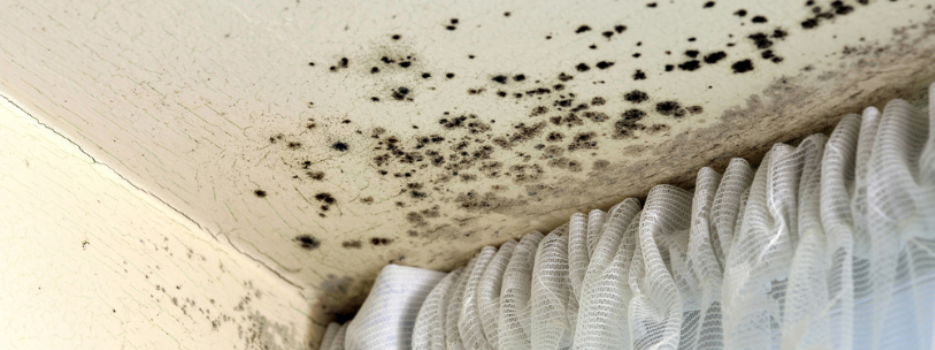
Related Posts
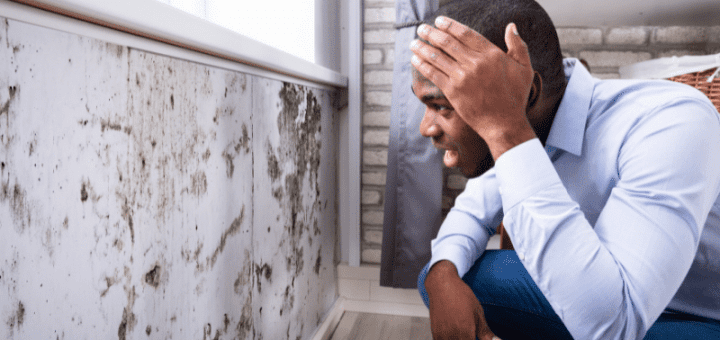
How to Prevent Mold in Your Basement
When it comes to preventing mold growth within a home, the basement is one of the most vulnerable areas that require plenty of attention. These tips can help you control the moisture level in the basement and prevent mold growth.
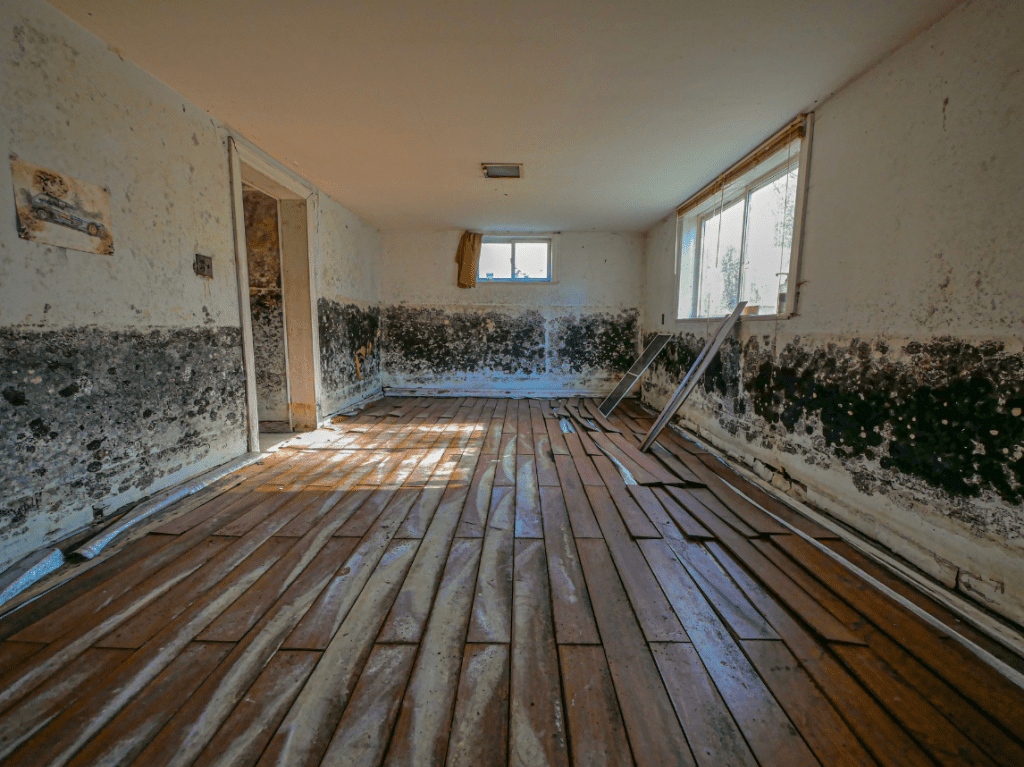
How do I get rid of mold growth in my basement?
Basement mold is a common issue and can spread to the rest of your house if you do not remove it, so it is best to be proactive about eliminating existing mold and preventing new mold colonies from forming. Follow these tips.
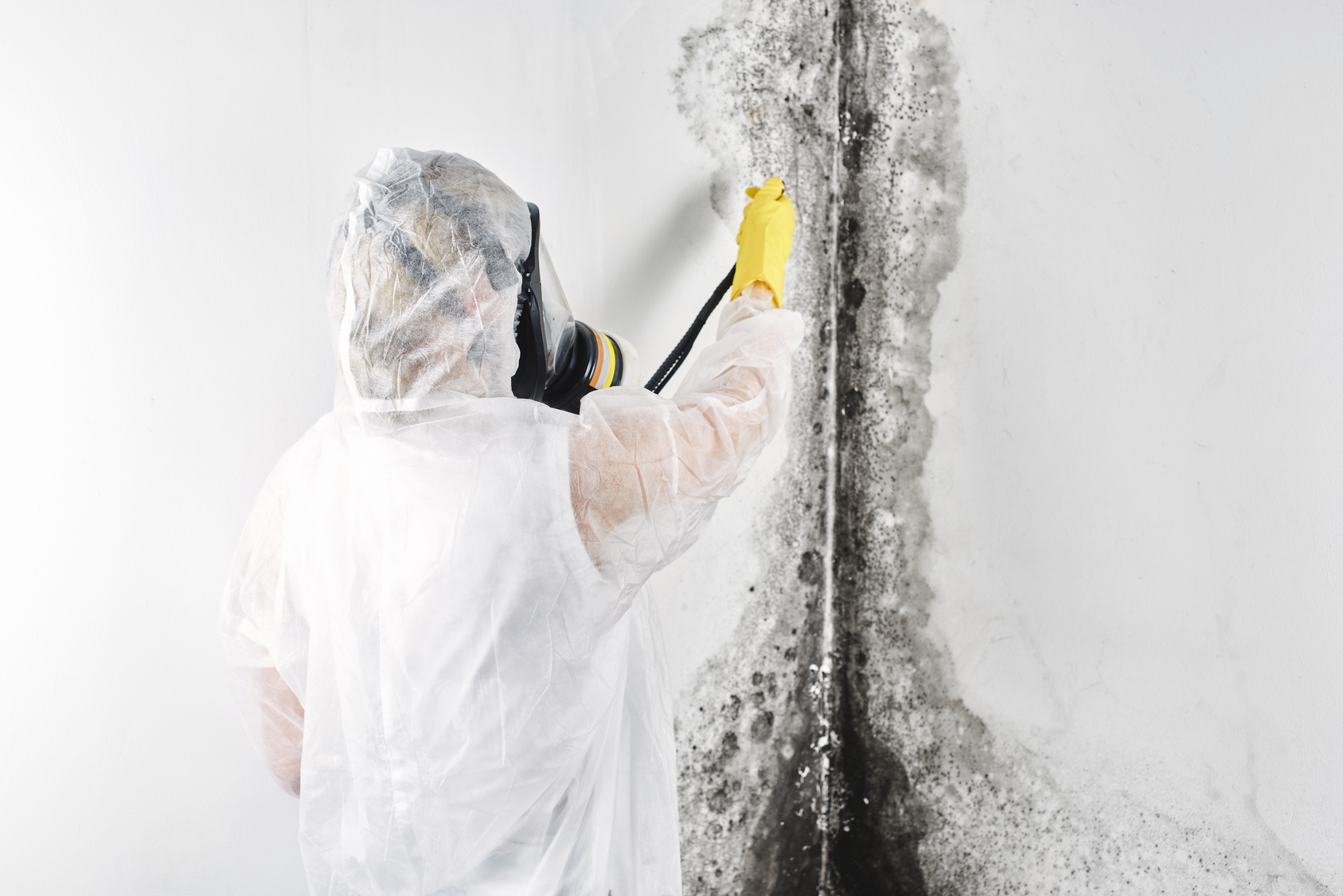
Removing Black Mold from Your Basement
If you notice black mold growing in your basement, it’s crucial that you take immediate action to have it removed so that you can limit the damage it can do to your home and you and your family. Follow these steps.

